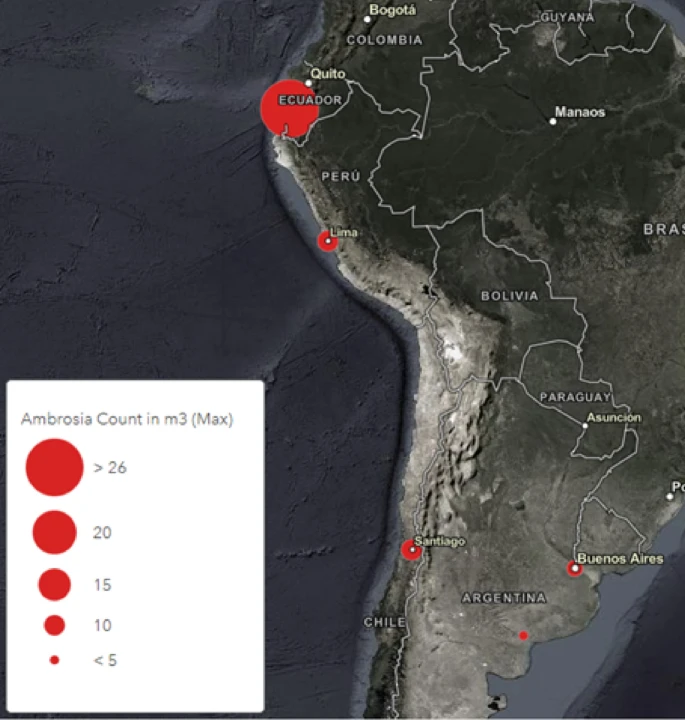Cherrez-Ojeda, I., Robles-Velasco, K., Ramon, G.D. et al. Aerobiologia (2024). https://doi.org/10.1007/s10453-024-09825-xAbstract
Pollen, particularly from the Ambrosia genus, plays a pivotal role in triggering allergic rhinoconjunctivitis symptoms. This review delves into the global background of Ambrosia, focusing on its origins, invasive potential, and spread to South America. The ecological niche for Ambrosia species is explored, emphasizing its stability globally but exhibiting unique and dynamic features in South America. Information on Ambrosia pollen concentration in South America is summarized, revealing varying levels across countries. The establishment of new aerobiology stations, as highlighted in the latest findings, contributes valuable data for understanding allergen risk management in the region.
 |
Comparative analysis of maximum daily Ambrosia
volume (m.3): city-wise distribution from 2019 to 2023 |
The health perspective addresses the rise in allergic diseases due to climate change, emphasizing the need for continuous monitoring, especially in South America. Agricultural damage inflicted by Ambrosia is discussed, emphasizing its invasive potential, high seed production, and negative impact on crops, forage quality, and livestock. The review also positions Ambrosia as a marker of climate change, discussing the effects of global warming on pollen seasons, concentrations, and allergenic characteristics. The importance of expanding aerobiology stations in South America is underscored, requiring collaborative efforts from government, scientific societies, and academic institutions. The review concludes by advocating for increased monitoring to address potential challenges posed by Ambrosia, offering a basis for tailored interventions and future research in South American regions.PDF


No comments:
Post a Comment